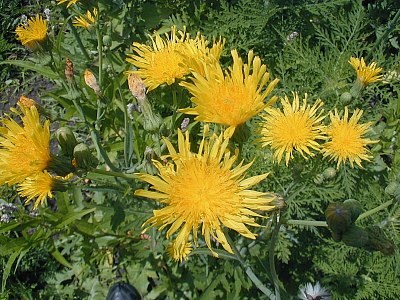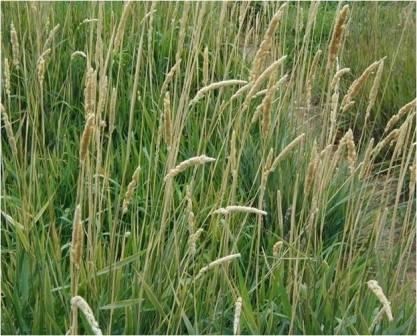|
You are viewing ARCHIVED content published online before January 20, 2025.
Please note that this content is NOT UPDATED, and links may not work. For current information,
visit https://www.nps.gov/aboutus/news/index.htm.

Contact: Lewis Sharman, Ecologist, 907-697-2623 Contact: Shahed Dowlatshahi, 907-697-2652 Glacier Bay National Park and Preserve is currently host to two highly invasive plants species: reed canarygrass on the maintenance hillside and perennial sowthistle on Strawberry Island. Since manual control efforts have proven ineffective in the past six years the sites are scheduled to be treated with herbicide next week. The first area scheduled for treatment is a 2.39 acre infestation of perennial sowthistle (Sonchus arvensis) located in several dense patches along the southeastern edge of Strawberry Island. The herbicide to be used is Milestone VM (aminopyralid), a broadleaf specific herbicide that does not affect grasses. The application rate of this herbicide is very low, meaning that very little of the active ingredient will be on the ground and the compound breaks down very rapidly, leading to a reduced environmental impact. Half of this infestation was treated with the same herbicide last August and visits to the site in September proved the application to be effective. 
The second area to be treated is an infestation of reed canarygrass (Phalaris arundinacea) on the maintenance hill. The infestation is scattered across the hill and totals approximately 0.09 acres in total. The herbicide being used is Aquamaster (glyphosphate), a broad spectrum herbicide that will affect all vascular plants it contacts. Treatment areas should be avoided until the spray is dry. These areas are being treated because they have been extremely resistant to manual control efforts over the past six years and are isolated enough that they can be eradicated from the park. Treatments will occur between July 24th and 26th, weather permitting, and will be performed by a certified herbicide applicator from the Anchorage regional office. These areas should be avoided until the spray is dry. |
Last updated: April 14, 2015
